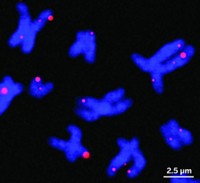Advertisement
Grab your lab coat. Let's get started
Welcome!
Welcome!
Create an account below to get 6 C&EN articles per month, receive newsletters and more - all free.
It seems this is your first time logging in online. Please enter the following information to continue.
As an ACS member you automatically get access to this site. All we need is few more details to create your reading experience.
Not you? Sign in with a different account.
Not you? Sign in with a different account.
ERROR 1
ERROR 1
ERROR 2
ERROR 2
ERROR 2
ERROR 2
ERROR 2
Password and Confirm password must match.
If you have an ACS member number, please enter it here so we can link this account to your membership. (optional)
ERROR 2
ACS values your privacy. By submitting your information, you are gaining access to C&EN and subscribing to our weekly newsletter. We use the information you provide to make your reading experience better, and we will never sell your data to third party members.
People
Reactions: Recognizing more contributors to the discovery of DNA’s structure, and paying attention to the supramolecular factor in AI
May 25, 2023
| A version of this story appeared in
Volume 101, Issue 17
Letters to the editor
Recognizing more contributors to DNA discovery
In Wikipedia, there are 21 scientists listed who made significant contributions to determining the structure of DNA. In recent decades the focus has been on the contributions of only 3 of those individuals, to the exclusion of others (C&EN, May 1, 2023, page 6). For example, a recent book on paleogenetics attributes this discovery solely to James Watson and Francis Crick using Rosalind Franklin’s data. While Watson and Crick did derive a complete model for the structure of DNA, they were greatly assisted by information from multiple sources.
Florence Bell obtained the first diffraction image of DNA in 1938 while working with William Astbury. Their publication described DNA as being like a “pile of pennies” with a periodicity of 3.3–3.4 Å along the axis.
The group at King’s College London consisted of John Randall (head), Maurice Wilkins (assistant head), Alexander Stokes (lecturer), Franklin (postdoctoral researcher), Herbert Wilson (postdoctoral researcher), and Raymond Gosling (PhD student). Wilkins and Gosling obtained an X-ray diffraction image of the A-form of DNA in 1950; Stokes performed theoretical calculations for the expected diffraction pattern of a helical structure and compared it with the diffraction image to confirm that the structure was indeed helical (with C2 symmetry). Stokes was therefore the first person to identify the helicity associated with the backbone of DNA. Subsequent work by Franklin and Gosling in 1951–52 provided a much more detailed analysis of the sodium deoxyribophosphate backbone of DNA.
Information on the purine-pyrimidine hydrogen-bonded base pairs, which contain the coded genetic information in DNA, came from Erwin Chargaff’s studies of the ratios of the specific bases in a range of DNA samples from different sources; currently these results are formulated as Chargaff’s rules (published in 1952).
Jerry Donohue was a visiting scientist at the University of Cambridge when Watson and Crick were attempting to build a purine-pyrimidine dimer model. Donohue had studied hydrogen bonding in organic crystals at the California Institute of Technology (PhD under Linus Pauling) and helped significantly in the development of an accurate dimer model.
Unravelling the Double Helix: The Lost Heroes of DNA, by Gareth Williams, gives a nicely detailed chronology of the contributions of the many scientists involved in this discovery.
Ralph A. Whitney
Kingston, Ontario
The supramolecular factor in AI
The use of artificial intelligence is now receiving considerable attention by the pharmaceutical industry as an alternative to classic approaches toward drug design. Here, machines that mimic human intelligence are being asked to rapidly identify new drug candidates. One significant factor that I believe has been overlooked by AI, and by virtually all other drug design approaches, is the supramolecular factor. Specifically, what I’m referring to is the difference in the biological action of agents that function as single molecules versus ones that function as a collection of these molecules—that is, as aggregates.
To illustrate what I’m talking about, consider the known properties of amphotericin B. This drug has served as the gold standard for treating life-threatening fungal infections for the past 50 years. It has also earned the reputation of being one of the most toxic drugs used in modern medicine. Indeed, physicians often refer to amphotericin B as “amphoterrible.” In laboratory studies by Jacques Bolard and coworkers in Paris, it has been shown that single molecules of amphotericin B are highly selective in destroying fungal cells over red blood cells, while aggregates of this drug readily destroy both cell types. This fact by itself can explain why amphotericin B is so toxic when used therapeutically. Specifically, aggregates of this agent may be making a major contribution to its biological action. Consistent with this explanation, we have found that synthetic derivatives of amphotericin B that exhibit a reduced tendency to aggregate are more selective in destroying fungal cells and are less toxic, according to laboratory and animal studies. The fact that similar behavior has also been reported for certain antibacterial agents—in which single molecules favor the destruction of bacterial cells over red blood cells while aggregates readily destroy both types of cells—implies that this dichotomy is likely to reflect a general and heretofore unrecognized phenomenon. In principle, this could have direct relevance not only for the design of new antibiotics that are sorely needed but also for the design of other classes of drugs, such as novel anticancer agents. If this proves to be the case, then improvements in drug design should be possible using databases and drug design principles that minimize the tendency of biologically active agents to aggregate—that is, by taking the supramolecular factor into account.
Steven L. Regen
Bethlehem, Pennsylvania



Join the conversation
Contact the reporter
Submit a Letter to the Editor for publication
Engage with us on Twitter